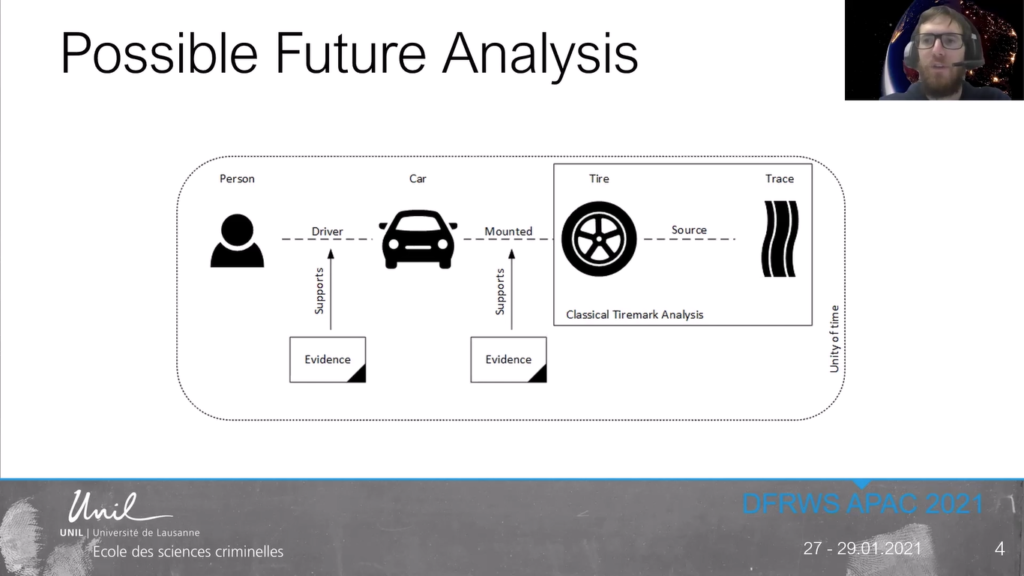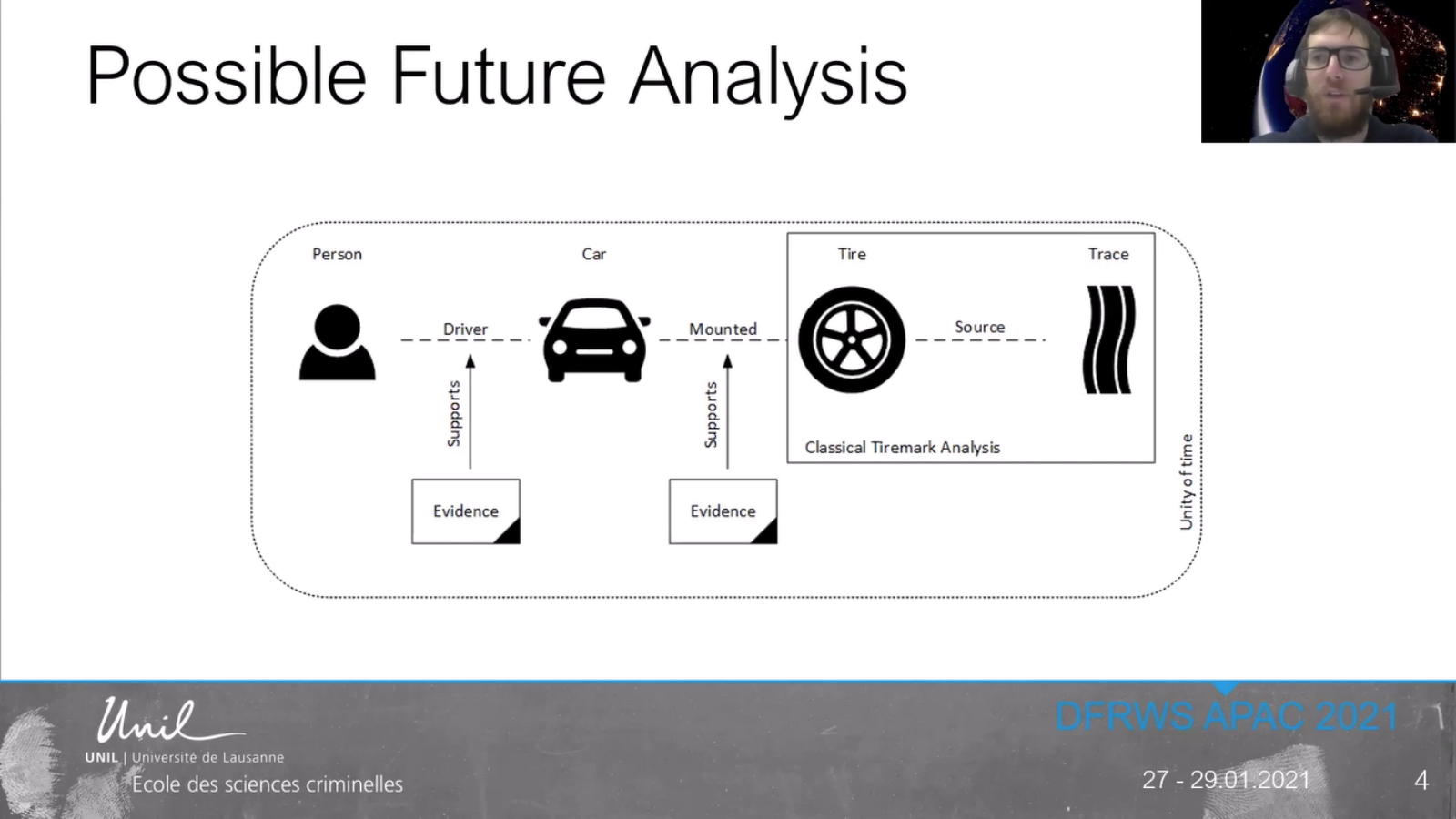Hello everybody. My name is Hannes Spichiger. I’m a PhD student at the University of Lausanne and I’m here to talk to you about how connected devices change the use of object traces.
Now, as you are all aware, there is a gap between the physical and the virtual world. You are also likely aware that there are devices, such as IoT for example, that are allowing us to gap these bridges and using digital evidence to pronounce, to give an opinion about what is happening in the physical world.
Now, those IoT devices are becoming more and more prevalent and are opening up new avenues for investigation. Today, I’d like to talk to you about one of those avenues. Let’s suppose we have a car accident with a driver on the run and, on the scene of the incident, we find a tire trace. Now, with classical tire mark analysis, we will be able to match this tire trace to a suspected car or, more precisely, to the tire that is mounted on this car.
We may then infer that the same tire was mounted at the time of the incident, and we may even argue about the person that was driving it. This is, however, mostly based on circumstantial evidence.
This changes as soon as we’re looking at a connected car. Last year, a tire manufacturer announced that they will now be producing smart tires that tell the car about the state of the road and the state of the car itself. At the moment, we do not know whether this data will be available to analysts or investigators and what format this data will take, but it is safe to assume that there will be data to be recovered that allows us to infer about what tire was mounted at the time of the accident.

Equally, smart cars store a lot of data about driving, about settings, like the driver’s seat, the settings of the rear mirrors. All those informations allow us to give an opinion about who the person was that was driving the car at that given moment, or at least they may allow us to do so.
I am of the opinion that currently we are not able to do that. There is a need for more awareness. Most investigators do not know this data may exist, and crime scene investigators are unlikely to recover it. There is a need of interdisciplinary work. We need to work together with specialists from behavioral sciences and classical forensic science to see whether we can find sufficiently robust data to make those inferences.
As always, when you’re working together with people from other disciplines, there is a need for adaptive language, so specialists can understand each other and can use precise language to describe what they’re doing. Finally, there is a need for an evaluative framework. All those links that I presented you before are, they have some uncertainty linked to them. So, we need a framework that allows us to combine our uncertainties and give an overall opinion.
Thank you very much for your attention. I’d like to invite you to read my short paper and to contact me with your ideas as well.















